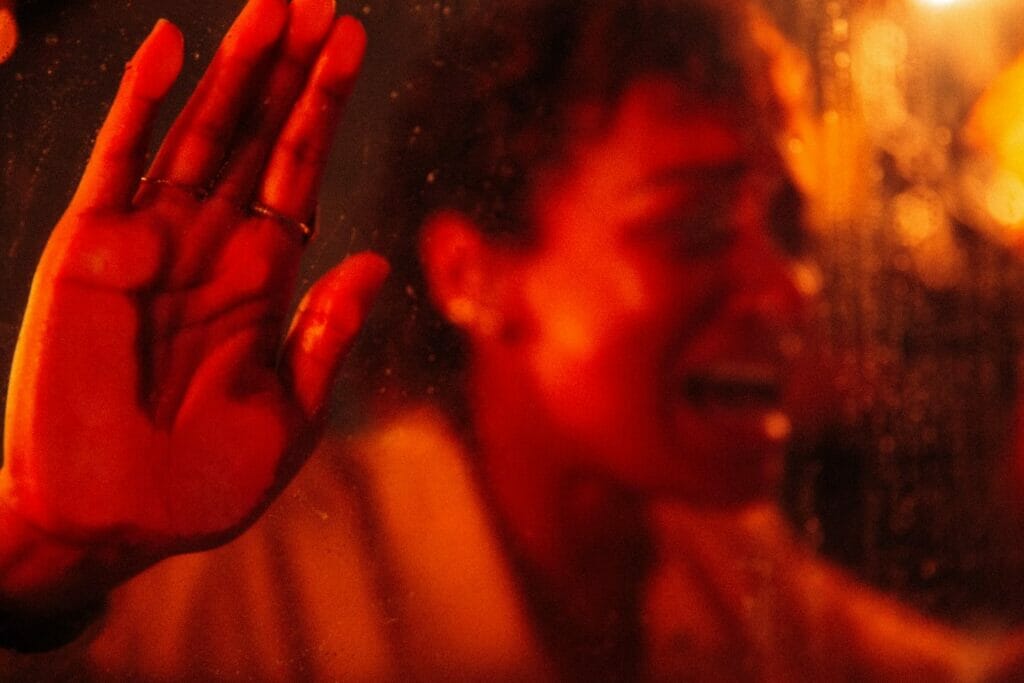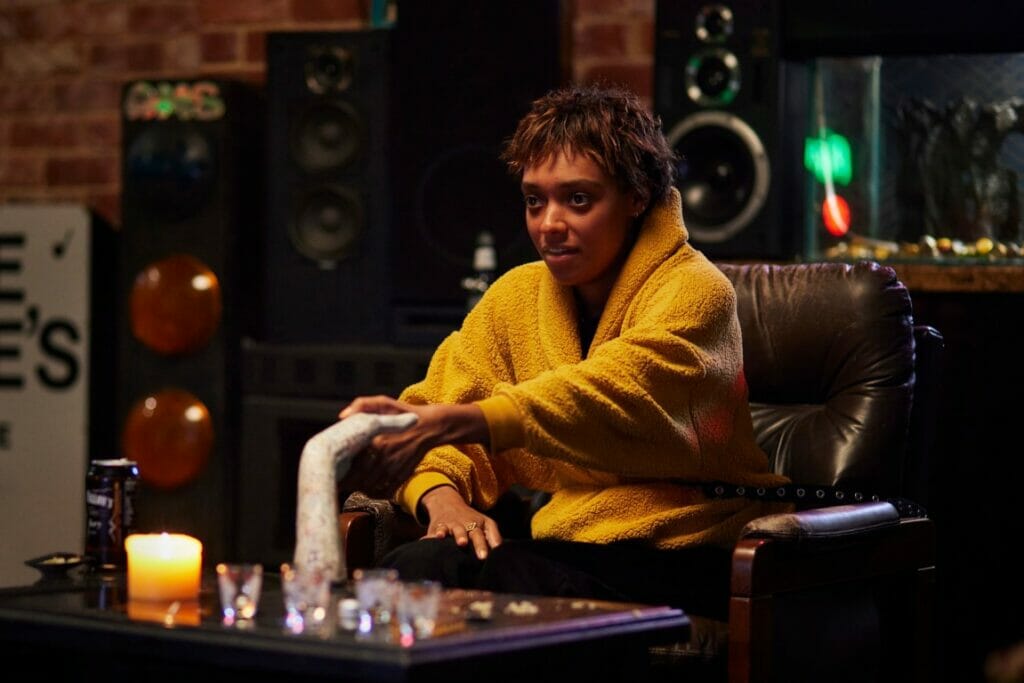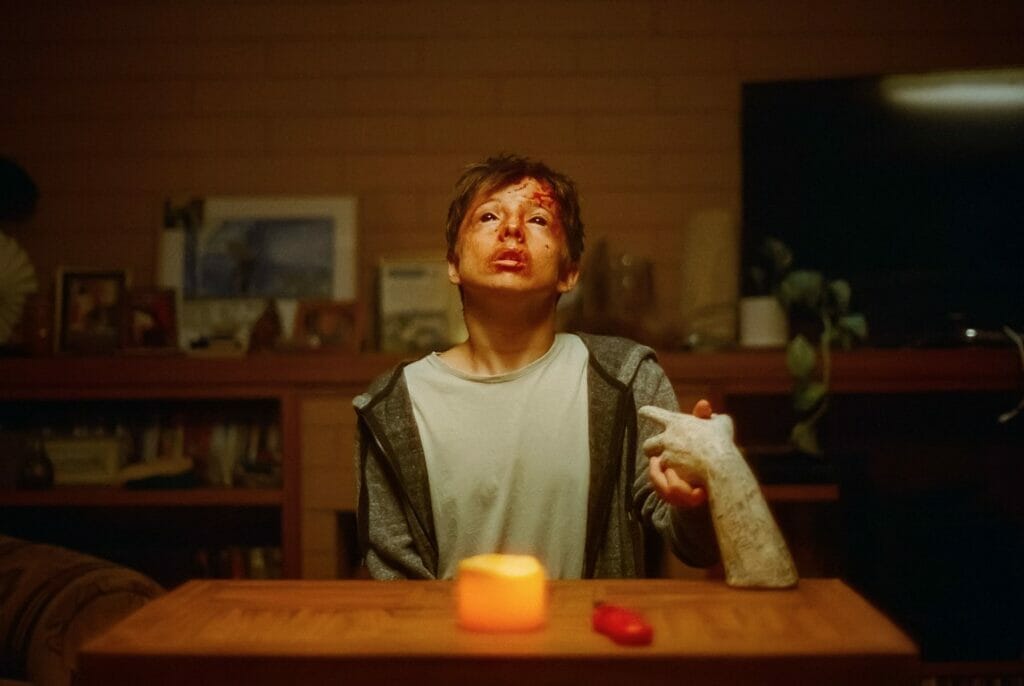The YouTubers turned horror darlings talk about their fascinating, darkly funny debut feature.
This interview was conducted prior to, and piece was written during, the 2023 WGA and SAG-AFTRA strikes. Without the labor of the writers and actors currently on strike, the film being covered here wouldn’t exist.
Australian filmmakers Danny and Michael Philippou have been making fast-paced, out-there YouTube videos since they were in their late teens. Their channel, RackaRacka, has nearly 7 million subscribers, and more than 2 billion views dedicated to wild, chaotic sketches ranging from Ronald McDonald shooting up a rival chicken shop to bloody renderings of a hypothetical duel between Marvel and DC characters.
But for their feature-film debut, the much-buzzed-about Talk to Me, the brothers channel their years of DIY filmmaking to something smart, visceral, and more story-driven — while still maintaining glimmers of the kind of devil-may-care energy that helped them build their careers.
The premise is deliciously clever in its simplicity: a group of teenagers in Adelaide, a suburb in South Australia, stumble upon an embalmed hand that seemingly allows the dead to inhabit your body when you hold it and speak the magic words of the title. The results are hilariously grotesque, the kind of stuff gen-Zers will happily record on their smartphones for clout; it becomes a house-party staple. But for one partygoer, Mia (Sophie Wilde), who still grieves her late mother, the chance to talk to the dead becomes too addictive to ignore. And the more she violates the rules of the game (e.g. don’t let the spirit in for more than ninety seconds), the closer to doom she becomes.
It’s a remarkably assured debut, one suffused with bursts of pitch-black comedy to underline its more affecting tale of familial grief and the way social media makes us chase attention to increasingly dangerous degrees. It’s also a scrappy indie, one that fought uptight Hollywood studios, tight budgets, and a cast of unknowns to become one of the most talked-about movies of the year. (Its Sundance reception led to a quick bidding war, with arthouse titans A24 picking it up soon after; it releases wide on July 28th.)

For the Philippous, who sat down with The Spool after its Chicago premiere at the Music Box Theatre, it’s the end of a long, wild journey that began with simple YouTube videos — ones that they don’t feel belie the true intentions of their artistry.
“The stuff we were making [on YouTube] was very different from what we enjoyed watching,” Danny says. “I love foreign dramas with great characters, stories, and themes. That’s the stuff we respected. So when we do a film, we want to make something that works not just at face value as a shock horror thing. We want it to be layered.”
In Talk to Me‘s case, that comes courtesy of the film’s young cast of characters, who treat the embalmed hand like a sure-fire ticket to social media notoriety; as soon as someone sits down in front of the hand, everyone’s phones come out, ready to record. Think The Exorcist by way of The Ice Bucket Challenge.
“That’s [a] perfect [comparison],” Danny notes. “The Exorcist is so incredible because their horror scenes are grounded in reality, and [William Friedkin’s] characters feel so real. Nothing feels too fantastical.”
So much of the film’s success rests on Wilde in a star-making performance as a grieving girl lured in by the promise of reconnection to her dead mother. Surrounding her is a remarkable group of young costars, from Alexandra Jensen’s guarded best friend Jade to Joe Bird’s innocent Riley, whose possession scene is a gruesome one for the books.
“I wish we’d had more time [with the cast], frankly,” Danny replies, given the film’s short five-week shooting schedule. To nail that process, the Philippous took their game cast through a thorough rehearsal process, breaking down each scene to make sure each word felt right. But it was through that extended time spent together that the cast learned more about their characters and how they related to each other. “It feels like they’ve known each other all their lives,” a nod to the skill of casting supervisors Nikki Barrett and Kelly Graham.
The ultimate test of that chemistry, and the Philippous’ frenzied filmmaking style, is the parties where they put on their makeshift seances, filmed with whirlwind ferocity by cinematographer Aaron McLisky. When the demons possess their mark, the camera tilts alongside them, holding on the kid’s convulsing body as if the film is connected to the spirits themselves. “We wanted to have an astral-projection vibe for some of those sequences,” Danny says. To find the right song to underscore the full-tilt energy of that party montage, the Philippous searched through thousands of songs, until they found a Richard Carter remix of Edith Piaf’s “La Foule.” “It was this mix of old and new, which matched this new generation of kids interacting with this ancient relic.”

The brothers only had two hours to shoot that sequence; their first assistant director told them it was “mathematically impossible” to get all of those shots in time. So they asked to control the set for all two hours, and put on the fly-by-night YouTube energy of their RackaRacka videos; “I was just playing music on the boombox, and we were riffing and getting these shots,” Danny says excitedly. “The producer pulled us aside, and said, ‘This is not how you run a feature film.'” But that infectious energy comes through the screen regardless.
Aiding in the film’s spooky atmosphere is its score, courtesy of Australian composer Cornel Wilczek — who, it turns out, was a late addition to the crew. “Even when we were doing stuff as kids, music and sound were important to us, because it was a way to make it look like more was happening than there was,” Danny explains. So they built an in-depth temp score for Talk to Me, and took it to another composer, who had to depart the project soon after. “I’m just too specific, I guess, about what I was after.” Wilczek came in late in the project and delivered in an extremely short amount of time. “I feel bad,” Danny admits; “I’d send him like five pages of notes every day. But he nailed every single one.”
But more than anything, the Philippous felt it important to make Talk to Me an Australian horror film, with a specifically Australian attitude — Australian actors speaking with their native accents, using the locations and fauna unique to their home country. (One crucial scene early on involves a dying kangaroo on the side of the road that Mia refuses to put out of its misery, a portent for the moral dilemmas to come.)
“We always felt like we’re telling an Australian story,” says Danny. He recounts one Hollywood studio that was interested in making it, but who wanted them to set the story in America. They refused, choosing instead to work independently with a million dollars less in the budget.
“Even with Australians, there’s a cultural cringe when it comes to Australian films. Maybe because we don’t sound cinematic,” Michael jokes. “But we want to help erase that stigma, because there are so many great stories to be told.”

Bringing the dead bodies to life required substantial work on the part of Talk to Me‘s effects team, building bloated dead bodies and eerie spirits whose figures warp and rot in ways that imply their fates. One of the first spirits you see is only on screen for thirteen frames, Danny explained; the actor flew in from interstate, quarantined for three days, came on set to get his makeup on, and shot for just fifteen minutes. “He was away from home for, like, a week,” Danny and Michael chuckle.
It was worth that effort, though, to capture the practical look and feel of the demons, which was important to honor the Philippous’ background in special effects as far back as the early days of RackaRacka. “We didn’t have visual effects around the beginning when we started making stuff,” Danny notes. “We had Dad’s VHS camera and tried to make things look like I’d pulled something gross out or cut off someone’s arm.”
So with this success out of the way, what’s next for them?
“I want to finish the script for a horror film called Bring Her Back, which I’d love to make,” says Michael. They’d love to make an action film in the future as well. But for now, they’re going with the flow, riding their success, and seeing what the next project brings. (Currently, they’re attached to a Street Fighter movie with Capcom.)
In the meantime, they’ve got YouTube to air out all their small ideas. But according to Danny, they’ve got “thirty years of feature film” characters and stories they want to start working on.